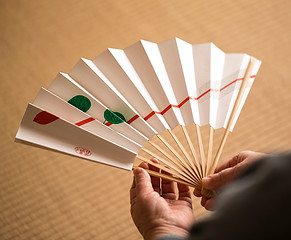ABOUT US


31st Grand Master
Ogasawara Kiyotada
Ogasawara Nagakiyo founded Ogasawara-ryū over 830 years ago as a school of archery, mounted archery, and Reihō (etiquette). The Ogasawara family served as instructors to generations of Shoguns in these disciplines. Ogasawara-ryū etiquette was taught to warriors across Japan as appropriate behaviour for samurai, and became the foundation for martial arts etiquette. Yabusame is a traditional martial art featuring an archer firing at targets from a galloping horse, and has been performed as a religious ritual at Shinto shrines since ancient times.
The strong legs and excellent posture needed to skilfully fire a bow from a galloping horse, are created by incorporating proper etiquette into daily life. The secrets of Ogasawara-ryū have been passed down from father to son throughout the centuries, and are preserved by the current and 31st generation head of the school, Ogasawara Kiyotada.

Mounted Archery
The archer: Ogasawara Kiyomoto,
The Yabusame performed at Tsurugaoka Hachimangū Shrine.
Shooting arrows from a horse is called Kyūbajyutsu (bow-horsemanship) or Kisha (mounted archery) and famous variations include Yabusame , Kasagake and Inuoumono.
Today, the Ogasawara-ryū practices yabusame and kasagake.
Yabusame originated from court nobles, incorporating ritual elements, in the Heian period (794-1185). An order from Minamoto no Yoritomo in 1187 required Nagakiyo to establish the rules for the Minamoto clan’s yabusame and present it at Tsurugaoka Hachimangū shrine. Even today, yabusame is performed at this shrine annually on September 16th.
After the ceremony is held in the shrine, mounted archers gallop down a track about 250 meters long and fire arrows at three targets. The archer’s cry of “In’yōi!” when he fires each arrow is a reference to yin and yang and is a prayer for peace throughout the realm and for good harvests. The movements for swapping targets and collecting arrows are also governed by reihō concepts passed down through the centuries.
The Ogasawara family utilizes three yabusame styles: the style established in the Kamakura period (1185-1333), coupled with the two styles prescribed by the eighth Tokugawa shogun, Yoshimune, in the Edo period (1603-1868).
Ogasawara-ryū yabusame is performed at shrines around Japan, and, in recent years, in overseas countries such as Britain and France.

Costumed for yabusame: Edo style (simpler costume)

Costumed for yabusame: Kamakura style

The archer accepts a cup of sacred sake, purifies himself, and then prepares for the archery ceremony.

Archery
Momote-shiki.
A ritual for prayer that involves decorating an altar.
The full ceremony takes an entire day.
Shooting from the ground is called kyujitsu or hosha. The hosha (archery) passed down within the Ogasawara clan was devised as a martial art in the Kamakura period, drawn from courtly culture but with the influence of the samurai spirit of simplicity and fortitude.
Its styles include purification rituals such as Hikimeno-gi and Ōmato-shiki, and a hunting practice ceremony called Kusajishi-shiki, which are still passed on today. Minamoto no Yoritomo is mentioned in the “Azuma Kagami” chronicles as performing ōmato-shiki. It declined in the Edo period, but was revitalized during the rule of the eighth shogun, Yoshimune, and it was performed in the Fukiage Gardens in the Imperial Palace on January 17th each year. Today, ōmato-shiki, the most solemn of all Ogasawara-ryū rituals, is performed at Meiji Jingu Shrine on the same day.

Hikime-no-gi
Hikime refers to the oval-shaped arrowhead, which makes a whistling sound when flying through the air. This sound is believed to scatter evil spirits. This ritual purification ceremony has three types of hikime: purification hikime, yagoshi-no-hikime, and tanjō hikime.
The archer: Ogasawara Kiyotada, the 31st Grand Master of the Ogasawara-ryū

Kusajishi-shiki
Seeing his vassals constantly miss deer,Minamoto no Yoritomo caused Nagakiyo to come up with this as a training method.

Reihō
Kiza posture
The posture used when moving whilst kneeling on the floor.
The reihō passed down in the Ogasawara family originated from the samurai etiquette of the Kamakura period. In the late Heian period, Nagakiyo created rituals for the samurai at the request of Minamoto no Yoritomo, and in the Muromachi period (1336-1573), these became formalized as the reihō for samurai manners.
In the Meiji period (1868-1912), reihō styles that ignored the core truths of samurai manners became widespread. This may be why many are under the impression that the etiquette is "rigid and stuffy", but the Ogasawara-ryū reihō is not a set of rules that focus on trivial details. It is to find beauty in being considerate of the other person, responding flexibly, and eliminating the irrelevant.

Hakamagi-no-Iwai
The ritual where a five year old boy is dressed in his first hakama on top of a go board.

Proper handling of a fan




